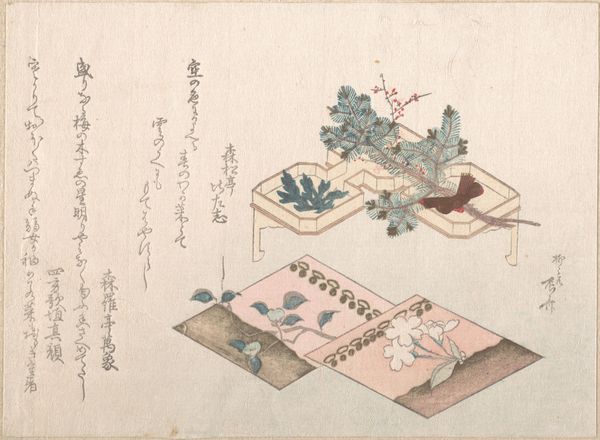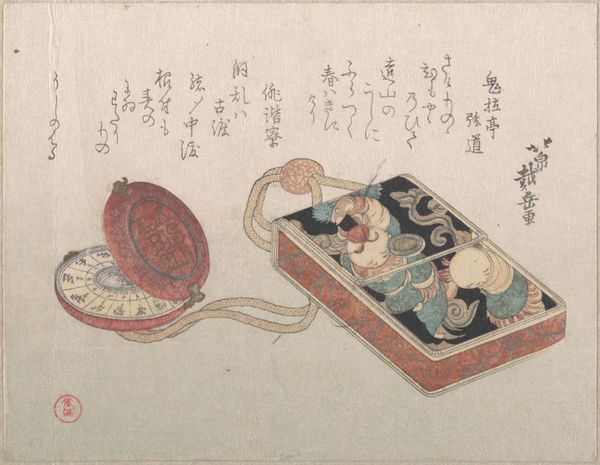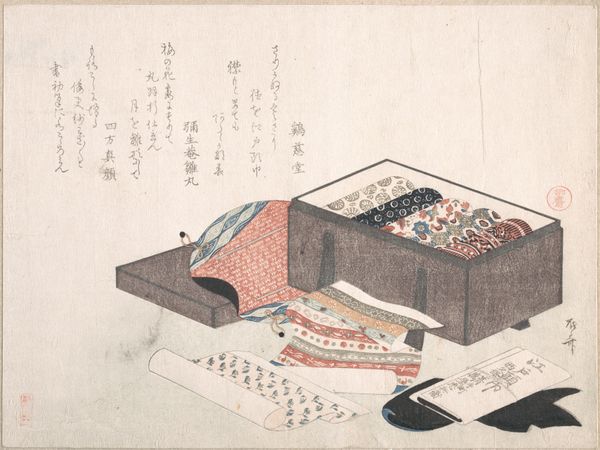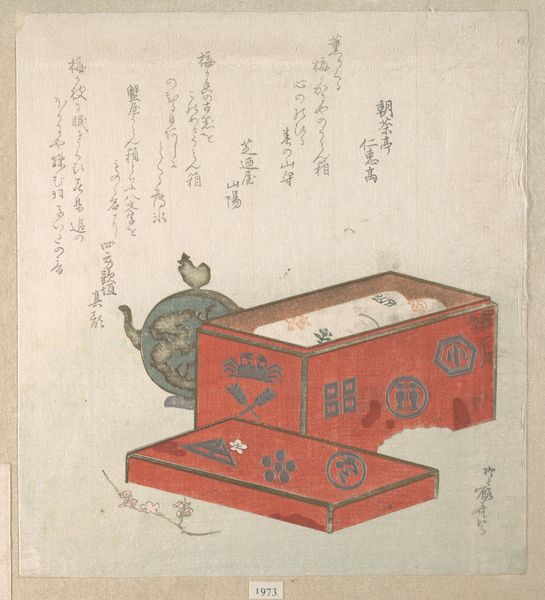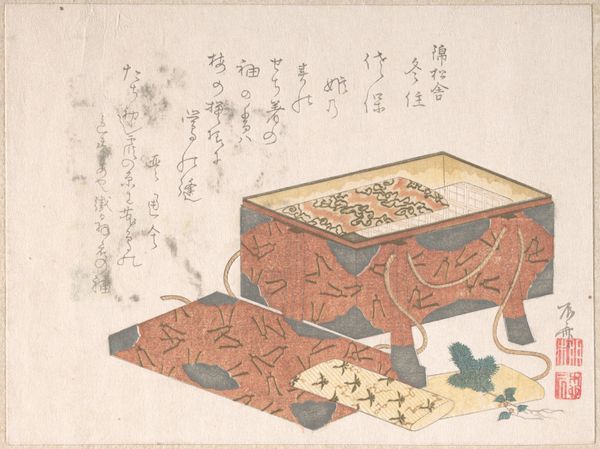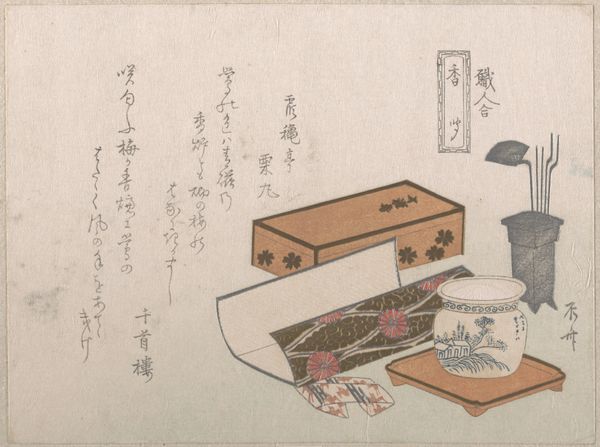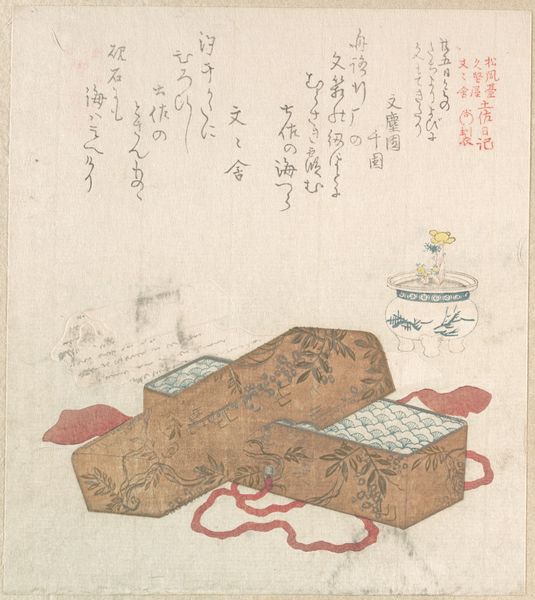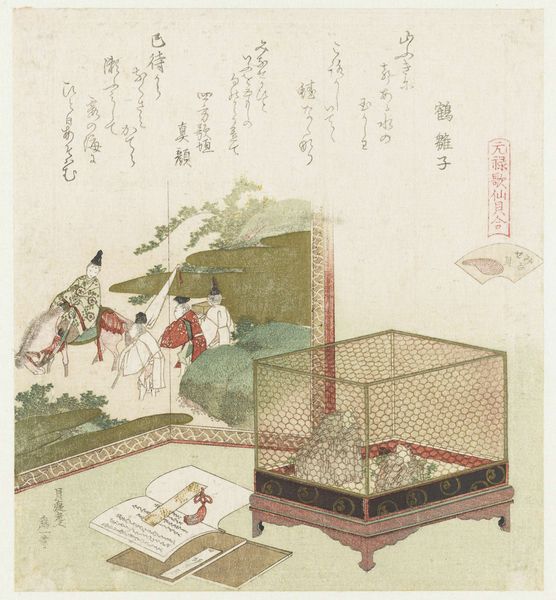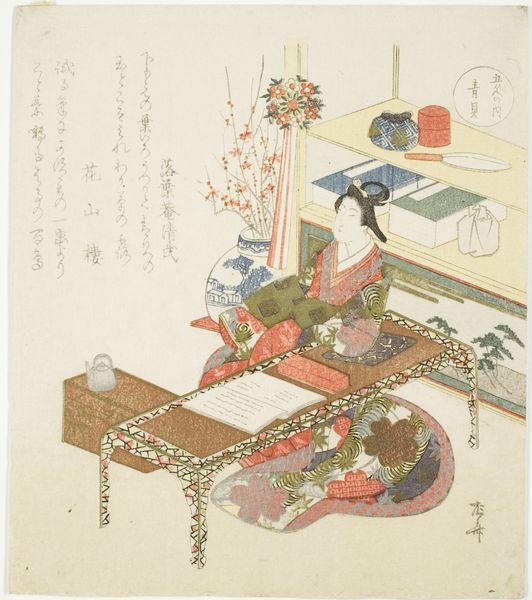
Crown on a Table, Lacquer Tray with Young Pine and Fan 19th century
0:00
0:00
print, woodblock-print
# print
#
asian-art
#
ukiyo-e
#
woodblock-print
Dimensions: 5 1/2 x 7 3/8 in. (14 x 18.7 cm)
Copyright: Public Domain
Curator: What strikes me most about this woodblock print is its stillness. The muted colors and carefully arranged objects create a sense of quiet contemplation. Editor: It's undeniably elegant, though the tableau vivant arrangement almost feels too deliberately composed for "still life." Is it simply meant to capture aesthetic beauty or perhaps reflect on cultural codes, too? Let me tell you, our audience is beholding "Crown on a Table, Lacquer Tray with Young Pine and Fan," dating back to the 19th century, currently housed at the Metropolitan Museum. Curator: Precisely, note the subtle geometry and contrast—how Shinsai uses the rectilinear forms of the table and tray to frame softer shapes like the crown and fan. I'd point out the interesting surface texture: how the white surface of tray plays with the fan, and the textures bring this whole arrangement together. Editor: Absolutely, the materiality—the gloss of the lacquer against the apparent dryness of the wood and pine—really brings the objects forward. The arrangement, I think, speaks volumes. For whom are these emblems of power and ritual intended, and for what occasion? Curator: Perhaps for a moment of private reflection or as markers within the evolving codes of the period; these carefully wrought shapes communicate on their own without direct contextual or textual description. This work exists beyond easy access or singular translation— Editor: But what about their potential resonance today? Are these objects merely formal curiosities, or might we explore broader social issues of cultural identity and consumption? Curator: Fair point. Ultimately, Shinsai has masterfully balanced surface allure with more enigmatic meanings. A piece that deserves deeper reflection to unravel its layers. Editor: It’s this ambiguity that makes this such an inviting—and provocative—piece, prompting conversations around tradition, class, and the power of art itself to shape our perceptions.
Comments
No comments
Be the first to comment and join the conversation on the ultimate creative platform.
